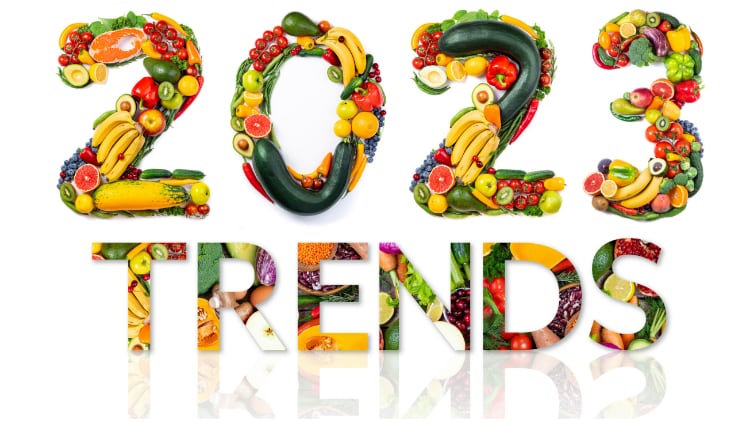Yesterday (4 Jan 2022) the UK’s Prime Minister made five promises to deliver “peace of mind”, among these was a pledge to halve inflation this year and ease the cost of living.
It’ll be welcomed news by many, but whether 2022’s third PM will be able to keep his promise remains to be seen.
Covid, costs, conflict and climate change are the four Cs that have caused havoc among the food and drink industries, as well as others, but it does look as though things are set to improve. And, just like with the pandemic, behavioural shifts have begun to emerge in response to harder times and some will no doubt be longer-term trends.
Will food inflation persist?
“As raw materials continue to rise in price, as do our products,” explained industry uniform brand JSD. “This has led to problems in the supply chain, with the cost of creation sometimes outweighing the demand. And it is not only the price of raw materials which has grown to cause disruption within the supply chain, but a rapid increase in energy prices has made transportation scarce.
“For those that continue to deliver, it is becoming a bigger expenditure, and some smaller businesses might not be able to afford to continue this at all. The good news is that inflation is set to fall early in 2023.”
Gary Lewis – chief commercial officer at KTC Edibles and NEODA President, agreed that we’ll start to see prices lowering.
“Oil prices are easing,” he said. “China has started producing more of their own oil – reducing import demand, and there’s been an increase in the production of soya, palm and rape oil. Olive oil, however, is still expensive because of poor harvest and flowering in key regions like Spain and Italy – meaning supplies are constrained and prices high.”
He continued, that policies put in place due to Covid have also made their mark, with the strict regulations in China lowering demand for oil, while a relaxation in rules in key oil producing regions, such as Indonesia, has seen labour issues aided.
“More oil is now being produced, creating a much healthier supply.”
Research from ingredient giant Kerry shows that as many as 96% of European consumers are now tracking their grocery spending. That said, consumers’ innate desire for exploration through food has stuck and Soumya Nair, global consumer research and insights director at Kerry, is sure it will continue.
“It isn’t just about the cheapest price,” Nair revealed. “People are craving more convenient, better value and faster options which deliver excitement. Think taste without compromise and multi-sensorial attributes to heighten product experiences and edible escapism.”
How severe weather conditions will impact food trends
Lewis explained that the high prices over the last year have prompted a global increase in planting but was unsure whether this would equate to a good harvest for 2023. This, he said, would be “largely dependent on the weather over the coming months, especially considering the triple La Niña conditions”.
Last year ‘La Niña’ returned for the third time in a row – a first in a century event. La Niña occurs when strong winds blow warm water onto the surface of the Pacific Ocean, causing cooler water to rise and impacting weather conditions.
He elaborated: The right weather conditions are essential to a successful growing season – and this was glaringly apparent in South America last year, where poor weather resulted in a 30 million tonne reduction in soy production.”
Changing conditions can also impact other areas such as storage container locations and transportation of assets.

As JSD explained: “The supply chain is especially susceptible to these changes in weather and temperature. The dangers of rising sea levels and extreme weather conditions for businesses include damages to assets, as well as customer complaints, delayed services and temporary shutdowns. While effort is being made to reduce the impact of climate change globally, businesses should prepare for further weather conditions in 2023 and establish continuance plans in the event of blackouts or logistical problems.”
Research from Mintel suggests that a big focus for food and drink NPD will be those that help consumers deal with the harsh effects of climate change. In other words, we can expect products that help people to cool down or warm up. Last year already saw consumers seeking energy saving products, with air fryers flying off shelves and an uptick in demand for foods that can microwaved, for example.
Industry players are also looking at novel ways to be more energy efficient, with Unilever launching two pilots to test out warmer ice cream freezer cabinets last year. We can most likely expect several other clever trials like this across the sector to both help reduce emissions and save money.
The consequences of labour shortages and strikes
Of course, inflation has also caused issues with labour, unsettling workers as wages no longer stretch far enough.
“This has led to many going on strike to dispute pay disparities and workers’ rights throughout the year,” commented JSD. “We have seen a number of strikes which have impacted people, from the rail strikes to the Royal Mail – all of which further disrupt deliveries too. In fact, the UK has lost more than half a million work days due to strikes across 2022.
“This causes disruption on all ends as customers and businesses alike worry about the delivery of their goods. We might see this go forward into 2023, with some unions planning to continue into the new year, such as the rail strikes going into January.”
The impact on logistics
On a more optimistic note, Lewis added that supply chain issues have seen improvements, allowing shipping prices to fall to what he says are pre-pandemic levels. “A slowing global economy has also helped to dampen prices, with risk of recession curbing demand,” he noted.
But Chris Smylie, managing director at Smylies, isn’t so optimistic, predicting that many of 2022’s on-going issues will trickle into the new year.
Commenting on the reopening of China, Smylie stated that “the seemingly rampant spread of Covid brings the possibility of future disruption to major seaports”, while also predicting industrial action at ports in the UK and abroad to add to delays and labour shortages, energy prices and food prices to continue impacting businesses.
“In terms of what to expect in 2023, we will undoubtedly see a continuation of increased costs,” Smylie contended. “As we’ve already seen in recent reports, inflation rates show no signs of abating, and the war in Europe can hold a degree of responsibility for this. The conflict had led to disruption to the supply of grain and increased costs for fuel and utilities, all of which impact manufacturers, those moving goods and the consumer.”
“A higher focus than ever has been placed on the logistics of deliveries and storage,” said JSD’s spokesperson. “Glasgow’s COP26 in November 2021 had a large emphasis on freight and logistics, with the environmental impact of transportation methods being brought back into question. This, alongside the global efforts to reduce carbon emissions, means that logistics companies are now going to have to transition their fuel consumptions to more environmentally friendly alternatives.
“This can be expected to escalate as we head into 2023, with the International Energy Agency (IEA) asking for the banning of all new petrol and diesel cars by 2025. This will affect the ways in which we transport goods both at home and abroad, as more countries shift towards renewable power.”
“With transport costs becoming an even larger percentage of the cost of goods, it is now even more important than ever to look for value in partnerships and relationships,” recommended Smylie.
He continued: “The Brexit hangover will remain. We see this most in the tough customs regime making it difficult to transport goods into EU. This is hitting British firms hard, especially as it is actually easier getting goods into the UK than it is to export them from the UK to EU. To add to this, the EU’s deal with Australia casts doubt on the ability of UK to strike deals which will see us remain internationally competitive.”
How should industry react to these challenges?
In response, Smylie believed that being aware of emerging consumer trends was integral, particularly for food and drink. “The ability to see how signals from certain markets will have an impact in others as buying behaviour changes, being adaptable enough to compete in this changing landscape, and being able to pass this information to partner, is – and through the coming recession will remain – key.”
“Whilst the market seems relatively stable, the events of the last year have shown just how quickly things can change,” added Lewis.
“It’s difficult to predict what 2023 may bring, but being cautiously optimistic seems to be a sensible approach. Whilst oil prices seem relatively stable, there is always the possibility that the oil market may be ‘oversold’ – meaning prices could rise quickly in the coming months.”
He explained that we are at the mercy of factors such as weather and on-going geo-political issues in Eastern Europe.
“For example, if the weather takes a turn for the worse in South America, prices will go up. If the conflict in Ukraine – which is the world’s biggest exporter of sunflower oil – continues to escalate, then we may see constrained supplies and higher prices once again in 2023.”
But Smylie concluded on a bright note: “It’s not all doom and gloom heading into the new year. Innovations in our industry, such as the digitalisation of supply chains, and signs of freight rates normalising, gives a glimmer of hope for the future. It’s also important to note that the sustainability agenda is on the up and businesses like ours, who have invested heavily in sustainability, are reaping the rewards; in new working efficiency, in greater appeal to partners and clients and in the benefit we create for our people and place.”
“Throughout 2022, we have experienced issues which have negatively impacted company assets and the deliveries of products to customers,” admitted JSD. “This has ranged from logistical issues such as increasing stormy weather to unions strikes which have disrupted many working days. While inflation is set to decrease early in 2023, the impacts of climate change and the call for workers’ rights could see these issues continuing into the new year.”
As for consumers, Kerry’s research shows that turbulent lives and uncertainty will see them looking to proactively address their needs, with a big focus on emotional wellness. As such, industry players should do well to consider science-backed ingredients in convenient formats. And if Mintel’s predictions are on the money, products which can help ease the climate burden will be big winners.





